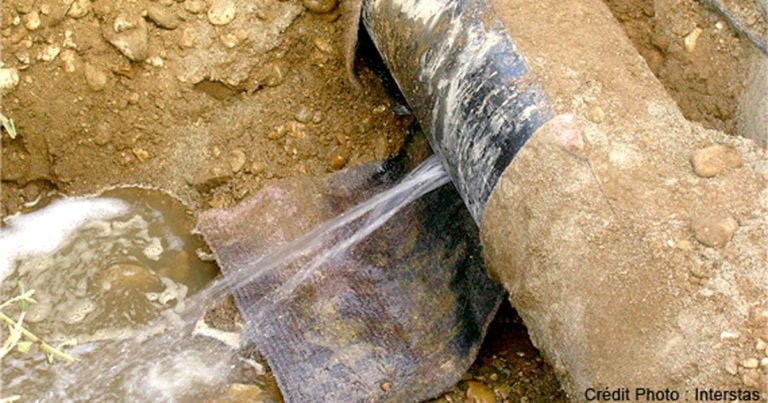To better combat leakage and the loss of drinking water, it goes without saying that choosing the right type of drinking water supply pipe to build new pipelines and refurbish existing ones is of paramount importance. Being correctly informed when making that choice not only protects the investment, it also ensures the longevity of the networks.
Over the decades, polyethylene (PE) has won over many a new user by its ease of installation, highly competitive economic cost and superior hydraulic performance, making it the most widely used material in Europe for drinking water supply networks.
Thus the investment made remains minimal compared to conventional solutions, especially as its operating cost is so low compared to its competitors, with leakage rates approaching zero.
The gas distribution industry has been using polyethylene for many years for good reason – the greater security it provides compared to cast-iron – and this preference is now rapidly spreading to the drinking water sector.
Below we analyse the main causes of pipeline leaks and look at the benefits of using polyethylene to solve them.
The main causes of leaks
and the solutions provided by polyethylene:
- Destabilisation of the ground in which the pipes are laid during construction work, earthworks, backfilling or compacting
- Changes over time in the consistency of the ground impacting the stability of the pipe bed
PE is a flexible material that follows the contours of the ground and withstands deformation, allowing it to absorb ground movements without splitting or coming apart due to the pipes being welded together.
- Badly installed pipes or shortcomings in the construction work
Unlike jointed pipes, polyethylene is a material that can be fusion welded. The procedure is simple and involves scanning the barcode with the welding machine. Post-weld indicators are provided to ensure the integrity of the weld and the reliability of the pipeline over time. The leakage risk at the joint between two pipes is zero.
- High pressure in the distribution network and hydraulic shocks (due to the sudden closure of a valve or other device) causing an overpressure situation (the water hammer effect)
Polyethylene is capable of withstanding very high instantaneous pressures. The water hammer effect is reduced by polyethylene’s ductility which protects the pipeline equipment (vents, purge valves, pressure reducing valves, etc.). Self-locking push-fit connections prevent the pipes from coming apart where the pipeline changes direction when an overpressure occurs.
- Ageing seals
Polyethylene pipelines, including their connections, are welded together by fusion welding or polyfusion, which eliminates the risks associated with mechanical connectors.
- External corrosion phenomena related to the type of soil or its humidity
- Internal corrosion if the water is harsh
Polyethylene is completely impervious to corrosion. It is a chemically stable material, which guarantees its longevity.
MAB
